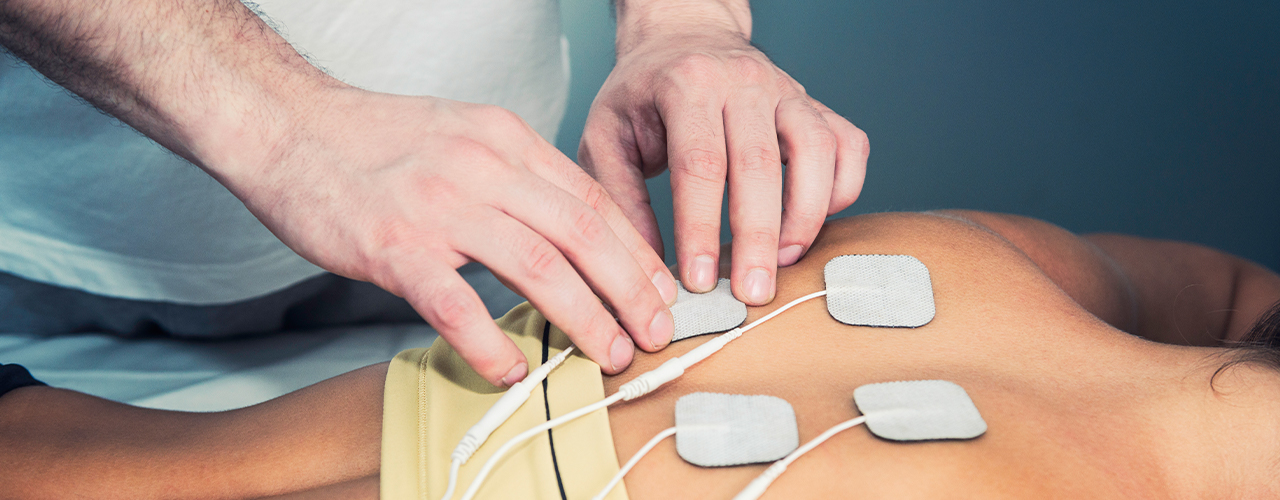 ● 30 minutes
● 30 minutesHeat Treatment for Stroke
Electrical stimulation is a therapeutic technique used in stroke rehabilitation to enhance motor recovery, muscle strength, and overall functional outcomes. Various forms of electrical stimulation can be utilized, each targeting different aspects of stroke recovery.
Your brain uses chemical and electrical signals to tell your muscle when to move. But, when a stroke occurs, the damaged part of the brain no longer sends these signals. As a result, it becomes difficult to move your affected muscles.
Once we activate the electric stimulation through your skin by placing non-invasive electrodes, it sends a mild electrical impulse to your muscles thereby causing them to contract.
1. Functional Electrical Stimulation (FES). Purpose: Improve motor function and facilitate movement by stimulating muscles during functional activities. Procedure: Application: Electrodes are placed on the skin over the muscles that need stimulation. Technique: Electrical impulses are delivered to induce muscle contractions, often used during functional activities like walking or reaching. Benefits: Enhances muscle strength, coordination, and motor control, and can improve gait and upper limb function. Examples: FES for Gait Training: Stimulates muscles involved in walking to improve gait patterns and walking ability. FES for Upper Limb Function: Helps with tasks like grasping and reaching by stimulating muscles in the arm and hand.
2. Transcutaneous Electrical Nerve Stimulation (TENS) Purpose: Provide pain relief and reduce spasticity by stimulating sensory nerves. Procedure: Application: Electrodes are placed on the skin near the area of pain or spasticity. Technique: Low-frequency electrical impulses are delivered to the skin, which can interfere with pain signals and may reduce muscle spasticity. Benefits: Provides analgesic effects and can help manage pain and discomfort during rehabilitation. Examples: Pain Management: Used to relieve chronic pain or discomfort associated with stroke and rehabilitation. Spasticity Reduction: Helps in reducing muscle tightness and improving movement.
3. Neuromuscular Electrical Stimulation (NMES) Purpose: Improve muscle strength and function by stimulating motor nerves. Procedure: Application: Electrodes are placed on the skin over specific muscle groups. Technique: Electrical impulses are delivered to induce muscle contractions, often used to strengthen weak muscles and improve muscle activation. Benefits: Enhances muscle strength and endurance, and can be used to prevent atrophy and improve functional movements. Examples: Strength Training: Stimulates muscles to increase strength and reduce muscle weakness. Prevention of Atrophy: Used to maintain muscle mass and function in the affected limbs.











